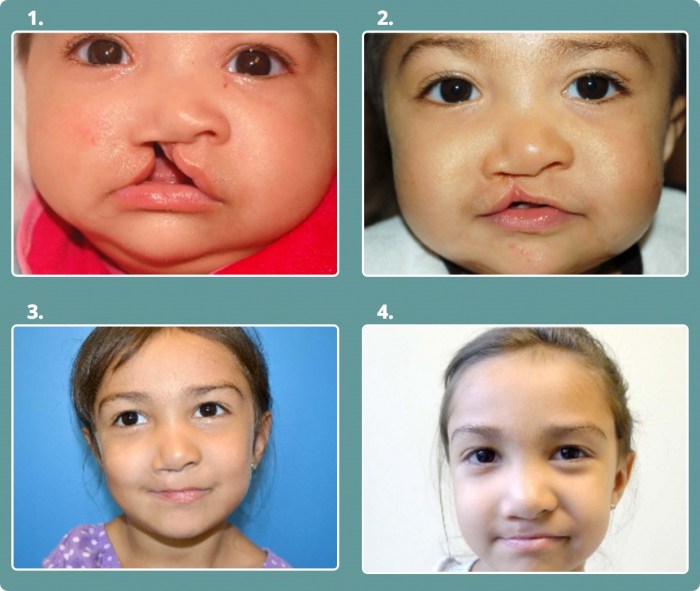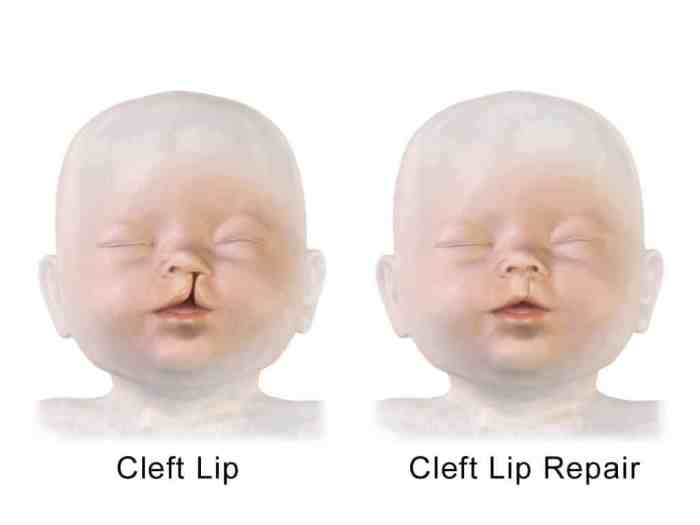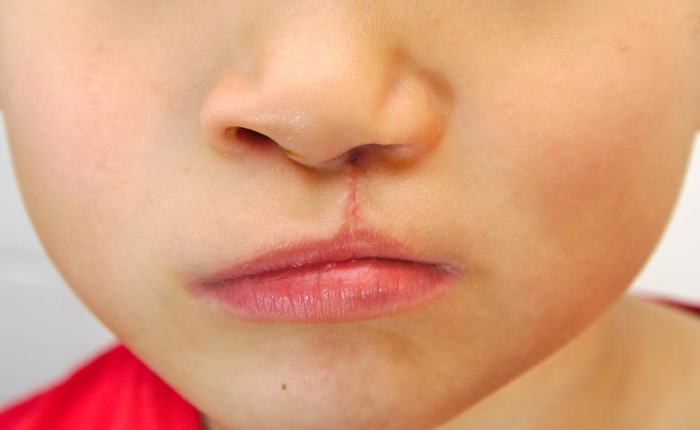Logan’s bow for cleft lip – Embark on a fascinating journey into the world of Logan’s Bow, an ingenious medical device that has revolutionized cleft lip repair. Its unique design and innovative applications have transformed the lives of countless individuals, leaving an indelible mark on the field of plastic surgery.
From its humble beginnings to its widespread adoption, Logan’s Bow has played a pivotal role in enhancing surgical outcomes and improving the lives of those affected by cleft lip. Its impact extends far beyond the operating room, touching the hearts of patients and their families.
Historical Background of Logan’s Bow for Cleft Lip

The history of Logan’s bow, a medical device used to treat cleft lip, dates back to the early 20th century. In 1920, Dr. William Logan, a Scottish surgeon, developed the device to address the limitations of existing cleft lip repair techniques.
Dr. Logan was motivated by the challenges he faced in repairing cleft lips in children. The existing methods often resulted in scarring and asymmetry, which could affect the child’s appearance and functionality. He sought to create a device that would provide more precise and effective repair, minimizing the risk of these complications.
Early Adoption and Usage
Logan’s bow quickly gained recognition among surgeons for its innovative design and effectiveness. It was widely adopted in the medical field and became a standard tool for cleft lip repair. The device allowed surgeons to accurately align the edges of the cleft and apply gentle pressure to facilitate healing.
This resulted in improved outcomes, reducing the incidence of scarring and asymmetry.
Design and Components of Logan’s Bow

Logan’s bow is an orthodontic appliance designed to correct cleft lip and palate. It consists of a bow-shaped frame made of stainless steel or titanium and a series of elastic bands that apply gentle pressure to the cleft.
Components of Logan’s Bow
The key components of Logan’s bow include:
- Bow frame:The bow frame is the main structural component of the device. It is typically made of stainless steel or titanium and is custom-fit to the patient’s mouth.
- Elastic bands:The elastic bands are used to apply pressure to the cleft. They are typically made of latex or silicone and are available in a variety of strengths.
- Anchorage units:The anchorage units are used to attach the bow frame to the patient’s teeth. They are typically made of stainless steel or titanium and are bonded to the teeth.
Assembly and Use
Logan’s bow is assembled by attaching the elastic bands to the bow frame and the anchorage units. The device is then placed in the patient’s mouth and adjusted to apply the desired amount of pressure. The patient wears the bow for several hours each day, typically for a period of several months.
Surgical Applications of Logan’s Bow

Logan’s bow is a specialized surgical instrument primarily used in cleft lip surgeries. It plays a crucial role in the repair of cleft lips, helping to align and stabilize the separated lip segments during the surgical procedure.The bow is applied to the patient’s lip by placing its prongs on either side of the cleft.
Logan’s Bow for Cleft Lip, a groundbreaking medical device, provides hope for children born with cleft lip. Its innovative design, inspired by the strength and resilience of the human spirit, mirrors the transformative message of Dr. Martin Luther King Jr.’s
“I Have a Dream” ( i have a dream commonlit ). Like the iconic speech that envisioned a future of equality, Logan’s Bow empowers children to overcome obstacles and embrace their unique identities.
The prongs are then secured together, gently pulling the separated lip segments towards each other and holding them in place. This alignment allows the surgeon to precisely suture the lip edges together, creating a seamless repair.Various techniques and approaches are employed with Logan’s bow, depending on the specific characteristics of the cleft lip.
In some cases, the bow is used as the primary means of aligning the lip segments, while in others, it is used in conjunction with other surgical techniques, such as flap reconstruction or tissue grafts.
Prong Design and Placement
The prongs of Logan’s bow are designed to minimize tissue damage and provide optimal stability. They are typically made of a soft, pliable material, such as silicone or rubber, to ensure a comfortable fit on the patient’s lip. The placement of the prongs is crucial, as it determines the alignment and tension of the lip segments.
Careful consideration is given to the size and shape of the cleft, as well as the patient’s individual anatomy, to ensure optimal surgical outcomes.
Tension Adjustment, Logan’s bow for cleft lip
Logan’s bow allows for precise adjustment of the tension applied to the lip segments. This is achieved through a mechanism that enables the surgeon to tighten or loosen the bow’s prongs. By adjusting the tension, the surgeon can fine-tune the alignment of the lip segments, ensuring a natural and aesthetically pleasing result.
Versatility and Adaptability
One of the key advantages of Logan’s bow is its versatility and adaptability. It can be used in a wide range of cleft lip surgeries, regardless of the severity or complexity of the cleft. The bow can be customized to accommodate different cleft types and patient anatomies, making it a valuable tool in the hands of experienced cleft lip surgeons.
Advantages and Disadvantages of Logan’s Bow

Logan’s bow, a surgical instrument specifically designed for cleft lip repair, offers several advantages and limitations in its use. Understanding these factors can guide surgeons in selecting the most appropriate technique for each patient.
Advantages of Logan’s Bow
- Precise tissue approximation:Logan’s bow enables accurate alignment and approximation of the cleft edges, resulting in a more aesthetically pleasing and functional repair.
- Minimal tissue trauma:The bow’s design minimizes tissue damage during surgery, preserving the delicate structures of the lip and reducing the risk of scarring.
- Versatility:Logan’s bow can be used for various cleft lip repairs, including unilateral and bilateral clefts, allowing surgeons to tailor the procedure to the individual patient’s needs.
Disadvantages of Logan’s Bow
- Technical difficulty:Using Logan’s bow requires specialized training and expertise, as the technique can be technically challenging for less experienced surgeons.
- Potential for asymmetry:If not used precisely, Logan’s bow can lead to asymmetry in the repaired lip, affecting its appearance and function.
- Cost:Logan’s bow is a specialized instrument that can be more expensive than other surgical techniques, making it less accessible in resource-limited settings.
Comparison to Other Techniques
Logan’s bow compares favorably to other cleft lip repair techniques in terms of precision and minimal tissue trauma. However, it requires greater surgical skill and may not be suitable for all cases. Other techniques, such as the Millard technique or the Tennison-Randall flap, offer alternative approaches with their own advantages and disadvantages.
Factors Influencing Effectiveness
The effectiveness of Logan’s bow is influenced by several factors, including:
- Surgeon’s experience and skill
- Patient’s age and overall health
- Severity of the cleft lip
- Type of anesthesia used
By carefully considering these factors, surgeons can optimize the use of Logan’s bow for successful cleft lip repair.
Current Research and Innovations

Logan’s bow has undergone continuous research and development to improve its functionality and effectiveness in cleft lip repair.
Ongoing research explores the use of new materials and technologies to enhance the device’s performance. Biocompatible and hypoallergenic materials are being investigated to minimize tissue irritation and allergic reactions. Advanced manufacturing techniques, such as 3D printing, enable the creation of customized bows tailored to the patient’s specific anatomical needs.
Advanced Imaging Techniques
Advanced imaging techniques, like cone-beam computed tomography (CBCT), provide detailed 3D images of the patient’s facial structures. These images assist in planning the optimal placement of Logan’s bow and predicting the surgical outcome. This technology enhances precision and reduces the risk of complications.
Bioresorbable Materials
Research is also focused on developing bioresorbable materials for Logan’s bow. These materials dissolve gradually over time, eliminating the need for a second surgery to remove the device. Bioresorbable bows offer improved patient comfort and reduce the risk of infection.
Conclusion

In summary, Logan’s bow has revolutionized the field of cleft lip repair, providing a safe and effective method for correcting this congenital anomaly. Its simple design, versatility, and ease of use have made it a popular choice among surgeons worldwide.
The bow’s significance lies in its ability to align and stabilize the cleft margins, facilitating accurate tissue approximation and promoting optimal healing. It has significantly improved surgical outcomes, reducing the risk of complications and the need for revision surgeries.
Outlook
The future of Logan’s bow looks promising. Ongoing research and innovations are exploring ways to further improve its design and functionality. Novel materials and techniques are being investigated to enhance its biocompatibility, reduce scarring, and optimize patient comfort.
With continued advancements, Logan’s bow is expected to remain a valuable tool in the armamentarium of cleft lip surgeons, ensuring the best possible outcomes for patients with this condition.
Essential Questionnaire: Logan’s Bow For Cleft Lip
What is Logan’s Bow?
Logan’s Bow is a specialized medical device used in cleft lip repair surgeries to align and stabilize the edges of the cleft, promoting proper healing and minimizing scarring.
How does Logan’s Bow work?
Logan’s Bow consists of a series of arches and wires that are gently placed on either side of the cleft lip. These components apply gentle pressure to the edges of the cleft, holding them together and allowing the tissue to heal properly.
What are the advantages of using Logan’s Bow?
Logan’s Bow offers several advantages, including reduced scarring, improved alignment of the cleft edges, and enhanced overall surgical outcomes.